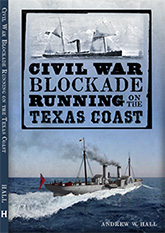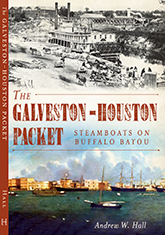New 3D Images of Civil War Shipwreck Released
![]()
On Friday evening, the Galveston Historical Foundation hosted a program on the battle between U.S.S. Hatteras and the famous Confederate raider Alabama. The program was held on the the sesquicentennial of that action, right down to the hour. (A nice touch, that.) The program was made possible by the generosity of the American National Insurance Company of Galveston, which provided an outstanding venue for the talk, and Humanities Texas, which provided underwriting for the event that allowed it to be open to the public at no charge.
Historian Norman C. Delaney gave the first part of the talk, that discussed the historical background of the fight and its aftermath. Dr. Delaney has published extensively on the maritime and naval aspects of the American Civil War, but his long-interest and focus on the career of C.S.S. Alabama, her officers and crew, mark him as the leading scholar on that ship’s history, a distinction he’s held for many years.
The second part of the talk was given by James P. Delgado, Director of Maritime Heritage for the Marine Sanctuaries Program at NOAA. Delgado is a well-known historian and maritime archaeologist, who served as Chief Scientist on last September’s expedition to map the exposed remains of Hatteras, where she lies on the bottom of the Gulf, about 20 miles from Galveston. Hatteras was the first open-sea use of the BlueView scanning system, which creates a “point cloud” that can be stitched together in a computer lab to create a full, 3D model of an underwater structure. (It’s very similar to LIDAR above the surface.) In 2010, this same system was used to map the sunken wreck of the 1901 Klondike Gold Rusk steamboat A. J. Goddard in Lake Laberge, Yukon Territory. Read more about it at Our Amazing Planet.
There are no plans to raise the vessel, or conduct excavations at the site, which is still considered U.S. Navy property and a war grave. There are hopes, however, that future expeditions, similar to the past one, can use non-distubance techniques to further map the site and better understand the events of that night, 150 years ago.
More images released by NOAA:


Looking aft from midships. At left and right mid-distance are the flanges (hubs) of the ship’s sidewheels, and at center are remains of the ship’s walking beam. In the left foreground is the remains of the steam drum, used to collect steam from the boilers. In the center distance are frames and the ship’s rudderpost.

Starboard paddlewheel flange (left foreground), with the steam drum (right) and remains of the walking beam (top left). The steam drum has evidence of a shot hole from Alabama‘s guns.
 Reconstructed overview of the site with the ship’s stern (right center) and propulsion machinery (center left).
Reconstructed overview of the site with the ship’s stern (right center) and propulsion machinery (center left).

Reconstructed overview of the site with the ship’s stern (right) and propulsion machinery (left).

Overhead view of the site. Hatteras‘ bow is to the left.
![[IMG]](https://i0.wp.com/ww3.hdnux.com/photos/17/23/31/4011610/0/960x595.jpg)
This sketch, made by artist Francis Schell (1834-1909) for Harper’s Magazine shortly after the battle that sunk the USS Hatteras, was not published until now. The Union gunboat was sunk by a Confederate raider in the Gulf of Mexico 20 miles off Galveston on Jan. 11, 1863. Photo: National Oceanic and Atmospheric Administration.
___________






leave a comment